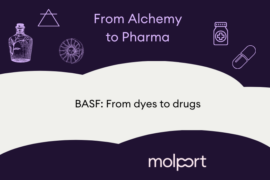September 29th
Discovery of ZN-c5, an Orally Bioavailable Selective Estrogen Receptor Degrader (SERD) with Improved Pharmacokinetics
https://pubs.acs.org/doi/abs/10.1021/acs.jmedchem.5c00887
Abstract
Here, we report our strategy to design an optimized oral selective estrogen receptor degrader (SERD), including human pharmacokinetics, by exploiting the bicyclo[1.1.1]pentane (BCP) ring system. The BCP has been shown to serve as a surrogate for phenyl rings and alkyl groups in drug candidates, reducing metabolism and improving physicochemical properties. It has not been extensively profiled in human clinical trials. We optimized a number of molecules and ultimately selected compound 4, which showed excellent cell potency in breast cancer lines and displayed highly favorable in vitro ADME properties across multiple species. This translated into highly desired exposure in vivo across both rodent and nonrodent species exceeding that observed with other contemporary SERDs and downregulators. After fully profiling the compound, we nominated compound 4 (ZN-c5) for clinical development. Compound 4 advanced into Phase 1/2 clinical trials, which demonstrated high human exposure upon dosing patients with 50 mg once a day.
September 25th
Discovery of Orally Efficacious Bridged Piperazines as smTNF Modulators
https://pubs.acs.org/doi/abs/10.1021/acs.jmedchem.5c00323
Abstract
Tumor necrosis factor α (TNFα) plays a critical role in inflammatory and autoimmune diseases. While biologic drugs have improved patient outcomes in conditions like rheumatoid arthritis by disrupting TNFα signaling, small molecule targeting has been challenging due to the strong TNF-receptor binding and difficulty in disrupting the TNF trimer. This research presents small molecule TNFα inhibitors with a novel bridged-piperazine core, developed through molecular dynamics simulation and scaffold hopping. The initial hit was optimized using structure-based design, leading to the discovery of a lead molecule with similar potency to the prototype but enhanced physicochemical properties. This lead demonstrated oral efficacy in a mouse glucose-6-phosphate isomerase-induced paw swelling model, comparable to the effects of a TNFα antibody. The estimated effective human dose is 200 mg once daily, highlighting the potential for clinical development of these compounds.
September 22nd
Orally Bioavailable Dopamine D1/D5 Receptor-Biased Agonists to Study the Role of β-Arrestin in Treatment-Related Dyskinesia in Parkinson’s Disease
https://pubs.acs.org/doi/abs/10.1021/acs.jmedchem.5c00294
Abstract
Dopamine replacement therapies for Parkinson’s disease often produce dyskinesias with long-term use. Published studies suggest that introducing β-arrestin signaling might be protective for dyskinesia. We advanced known noncatecholamine D1/D5 receptor G protein-biased agonists and found that removal of oxygen in the linker from published compounds limited β-arrestin recruitment, whereas introduction of nitrogen on the central o-phenyl linker favored β-arrestin recruitment and provided orally bioavailable compounds. Cryogenic electron microscopy suggested key receptor–ligand interactions influencing the different bias behaviors. We discovered compound 24, a D1/D5 receptor agonist with β-arrestin recruitment and properties for use in vivo. We compared 24 with tavapadon, which shows weak efficacy for β-arrestin signaling, in a rat model of Parkinson’s disease with L-DOPA-induced dyskinesias. At particular doses, compound 24 produced efficacy comparable to L-DOPA, but with fewer concomitant dyskinesias. This first in vivo study suggests that β-arrestin may have a positive influence on reducing dyskinesias following acute administration.
September 18th
Discovery of KDX1381, a Bivalent CK2α Inhibitor for the Treatment of Solid Tumors as a Single Agent or in Combination
https://pubs.acs.org/doi/abs/10.1021/acs.jmedchem.5c00695
Abstract
Casein kinase 2 (CK2) has emerged as a promising therapeutic target across a broad spectrum of malignancies, including pediatric and orphan cancers. The identification of a ligandable allosteric αD pocket on the CK2α subunit has enabled the development of bivalent inhibitors, which bind simultaneously to both the adenosine triphosphate (ATP) site and the allosteric pocket. Here, we report the discovery and pharmacological characterization of KDX1381, a structure-guided bivalent CK2α inhibitor with low-nanomolar potency and high selectivity, confirmed by cocrystal structures. In mice, KDX1381 suppressed CK2-driven tumor growth as a monotherapy and enhanced therapeutic efficacy when combined with vascular endothelial growth factor receptor (VEGFR) inhibitors or DNA-damaging agents in hepatocellular carcinoma and glioma models. These findings support bivalent CK2α inhibition as a differentiated therapeutic strategy with broad applicability in CK2-dependent cancers.
September 15th
Validation, Key Pharmacophores, and X-ray Cocrystal Structures of Novel Biochemically and Cellularly Active WRN Inhibitors Derived from a DNA-Encoded Library Screen
https://pubs.acs.org/doi/abs/10.1021/acs.jmedchem.4c03029
Abstract
A novel class of selective and potent WRN helicase antagonists identified via a DNA-encoded library screen was rigorously validated by various biophysical assays including ASMS, TSA, and SPR. Preliminary structure-activity-relationship studies identified the key pharmacophores and advanced the biochemical potency to single digit nanomolar. Potent analogs demonstrated anti-proliferative activities specifically in cell lines with a WRN genetic dependency. A crystal structure of a ligand-WRN complex revealed an unexpected large shift of the helicase domain compared to the apo WRN structure with ADP. These structural insights led to the successful design of covalent inhibitors and the identification of compound resistant WRN mutants that confirmed on-mechanism cellular activity. The covalent interaction between the ligand and at WRN Cys727 was confirmed by intact mass spectrometry and a bound crystal structure. The discovery of these unique WRN inhibitors provides more insight into the field and offers an opportunity to further optimize such molecules.
September 11th
Characterization of Hepatotropic Small Molecule Inhibitors of Hypoxia Inducible Factor Prolyl Hydroxylase in the Prevention of Oxygen-Induced Retinopathy
https://pubs.acs.org/doi/abs/10.1021/acs.jmedchem.4c02186
Abstract
Retinopathy of prematurity (ROP) blinds severely premature infants and is caused by oxygen supplementation. Hypoxia-inducible factor (HIF) stabilization during hyperoxia can prevent oxygen-induced retinopathy (OIR), the experimental correlate of ROP. Stabilization of hepatic HIF-1 alone can prevent OIR while contemporaneously protecting other organ systems, such as the lung and brain, from oxygen toxicity. However, HIF stabilization in central nervous system (CNS) oligodendrocytes reduces myelination. Here, we report the synthesis of small molecules specifically designed to not cross the blood-brain barrier based on a prodrug structure susceptible to hepatic carboxylesterases that release active drug. Twenty compounds were synthesized and rank ordered by Western blot, hypoxia response element binding, and reporter gene analysis. The lead compound prevented OIR, maintained normal CNS myelination, preserved the electroretinogram b-wave, and protected astrocytes. Strategies such as this might be broadly applicable to target specific hepatic functions while limiting off-target effects in other organs.
September 9th
Fragment-Based Approaches to Identify RNA Binders
https://pubs.acs.org/doi/abs/10.1021/acs.jmedchem.3c00034
Abstract
Although fragment-based drug discovery (FBDD) has been successfully implemented and well-explored for protein targets, its feasibility for RNA targets is emerging. Despite the challenges associated with the selective targeting of RNA, efforts to integrate known methods of RNA binder discovery with fragment-based approaches have been fruitful, as a few bioactive ligands have been identified. Here, we review various fragment-based approaches implemented for RNA targets and provide insights into experimental design and outcomes to guide future work in the area. Indeed, investigations surrounding the molecular recognition of RNA by fragments address rather important questions such as the limits of molecular weight that confer selective binding and the physicochemical properties favorable for RNA binding and bioactivity.
September 5th
Discovery of BAY 3389934 Hydrochloride: A Potent and Selective Small-Molecule Dual Factor IIa/Xa Inhibitor with Short Half-Life for the Acute Treatment of Sepsis-Induced Coagulopathy
https://pubs.acs.org/doi/abs/10.1021/acs.jmedchem.5c00538
Abstract
Sepsis-induced coagulopathy (SIC) is a severe and frequent complication of sepsis, which is associated with high mortality in patients. So far, attempts have failed to establish a global standard of care in this difficult-to-treat indication. Anticoagulation with a dual inhibitor of the coagulation factors IIa (FIIa, thrombin) and Xa (FXa) has the potential to improve the treatment of life-threatening acute coagulation disorders, such as SIC. Herein, we describe the discovery of BAY 3389934 hydrochloride (31), a potent and highly selective, direct dual FIIa/Xa inhibitor, with high solubility suited for i.v. application. This small molecule acts as a metabolically soft active pharmaceutical ingredient (API) due to a labile carboxylic ester group, which is responsible for the desired short pharmacokinetic and pharmacological half-life (t1/2), resulting in a high controllability of the pharmacological action.
September 2nd
The Discovery of C7-Substituted Norbornyl Bisamides as RXFP1 Small Molecule Agonists
https://pubs.acs.org/doi/abs/10.1021/acs.jmedchem.5c00991
Abstract
Human relaxin-2 (relaxin, H2-RLX, RLN2), an endogenous hormone associated with mammalian pregnancy, and its cognate receptor relaxin family peptide receptor 1 (RXFP1) have been implicated as important modulators of cardiovascular function and agonism of RXFP1 may potentially be utilized for the treatment of heart failure. Exploration of chemical space around previously reported anthranilamide 2 led to the discovery of lead compound 39 with significantly improved agonist activities toward human and rodent RXFP1. Compound 39 induced a dose-dependent heart rate increase in isoflurane-anesthetized naïve rats, which is consistent with the hemodynamic profile of relaxin in rat. Compound 39 also elicited significant interpubic ligament (IPL) expansion in C57BL/6 mouse, measured with microCT imaging, which recapitulated the effect of relaxin.





